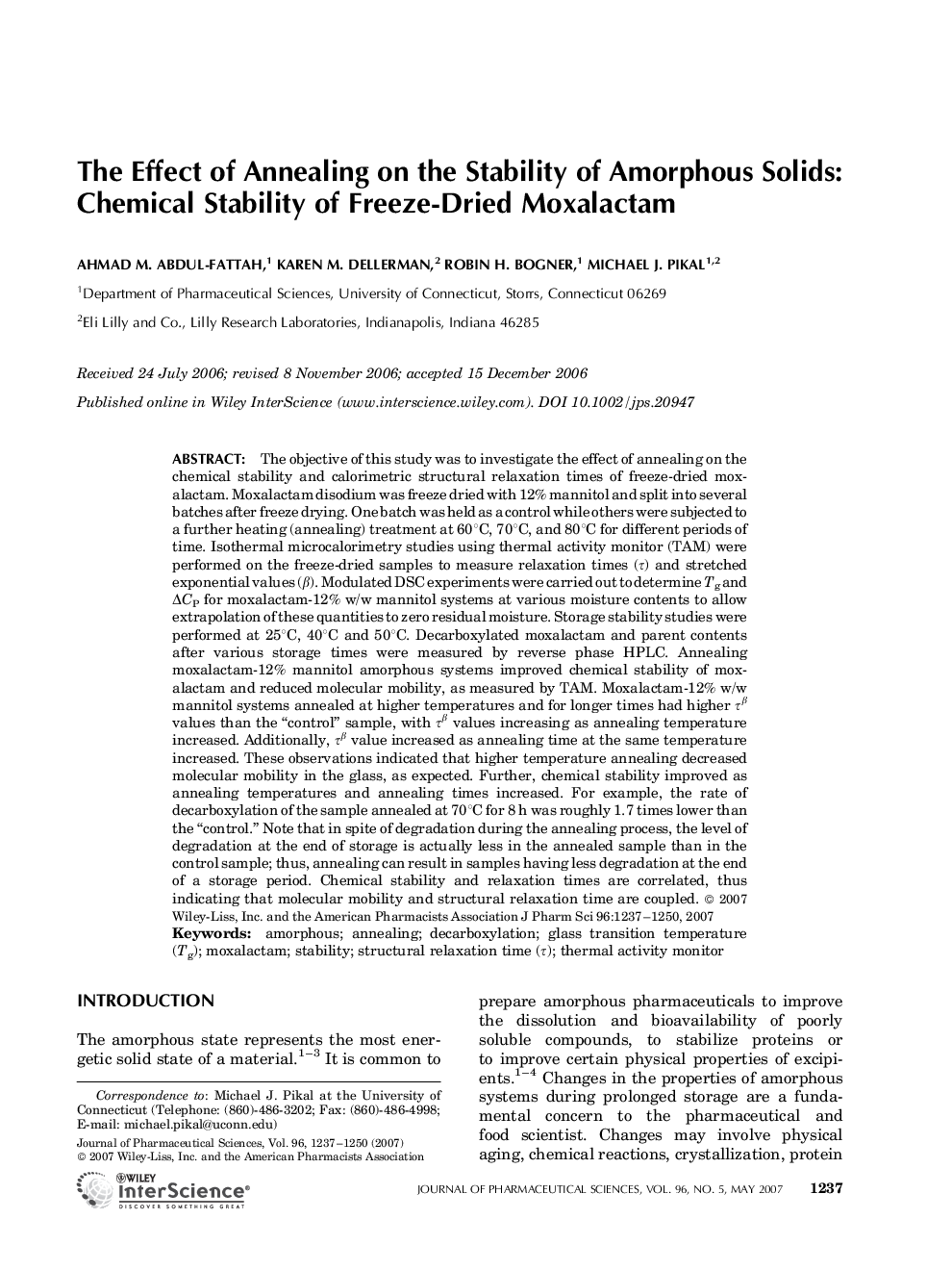| Article ID | Journal | Published Year | Pages | File Type |
|---|---|---|---|---|
| 2487696 | Journal of Pharmaceutical Sciences | 2007 | 14 Pages |
ABSTRACTThe objective of this study was to investigate the effect of annealing on the chemical stability and calorimetric structural relaxation times of freeze-dried moxalactam. Moxalactam disodium was freeze dried with 12% mannitol and split into several batches after freeze drying. One batch was held as a control while others were subjected to a further heating (annealing) treatment at 60°C, 70°C, and 80°C for different periods of time. Isothermal microcalorimetry studies using thermal activity monitor (TAM) were performed on the freeze-dried samples to measure relaxation times (τ) and stretched exponential values (β). Modulated DSC experiments were carried out to determine Tg and ΔCP for moxalactam-12% w/w mannitol systems at various moisture contents to allow extrapolation of these quantities to zero residual moisture. Storage stability studies were performed at 25°C, 40°C and 50°C. Decarboxylated moxalactam and parent contents after various storage times were measured by reverse phase HPLC. Annealing moxalactam-12% mannitol amorphous systems improved chemical stability of moxalactam and reduced molecular mobility, as measured by TAM. Moxalactam-12% w/w mannitol systems annealed at higher temperatures and for longer times had higher τβ values than the “control” sample, with τβ values increasing as annealing temperature increased. Additionally, τβ value increased as annealing time at the same temperature increased. These observations indicated that higher temperature annealing decreased molecular mobility in the glass, as expected. Further, chemical stability improved as annealing temperatures and annealing times increased. For example, the rate of decarboxylation of the sample annealed at 70°C for 8 h was roughly 1.7 times lower than the “control.” Note that in spite of degradation during the annealing process, the level of degradation at the end of storage is actually less in the annealed sample than in the control sample; thus, annealing can result in samples having less degradation at the end of a storage period. Chemical stability and relaxation times are correlated, thus indicating that molecular mobility and structural relaxation time are coupled. © 2007 Wiley-Liss, Inc. and the American Pharmacists Association J Pharm Sci 96: 1237–1250, 2007
